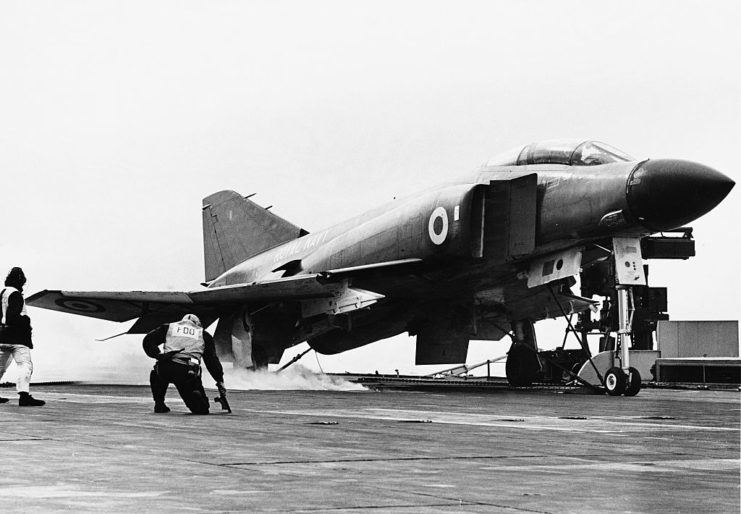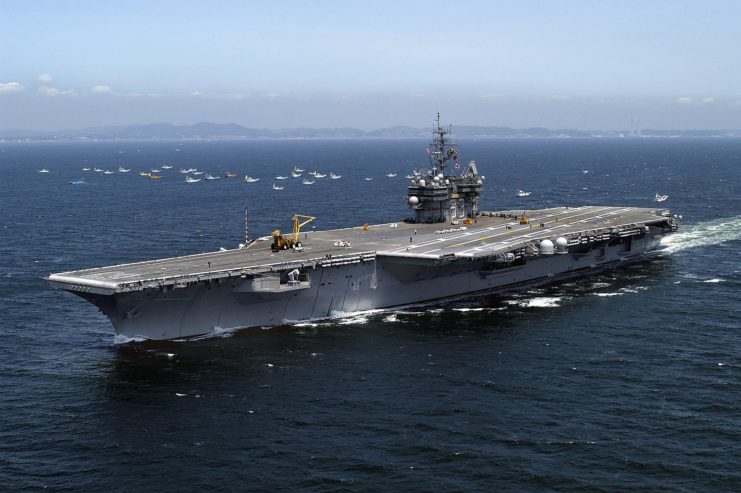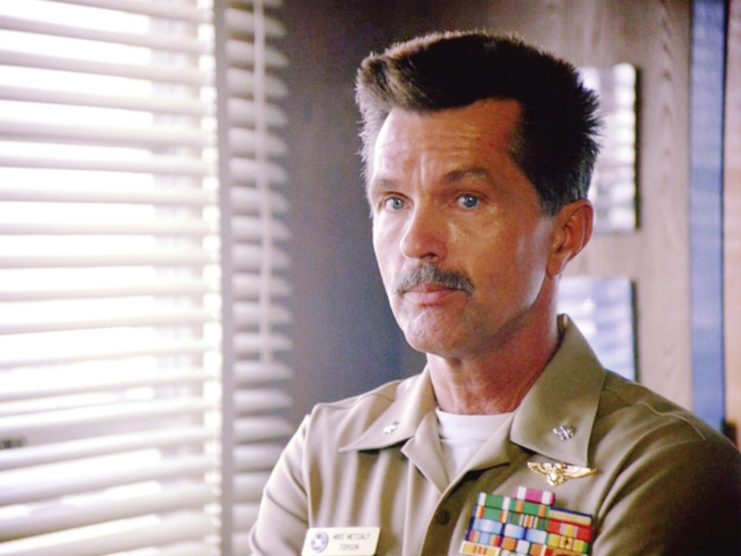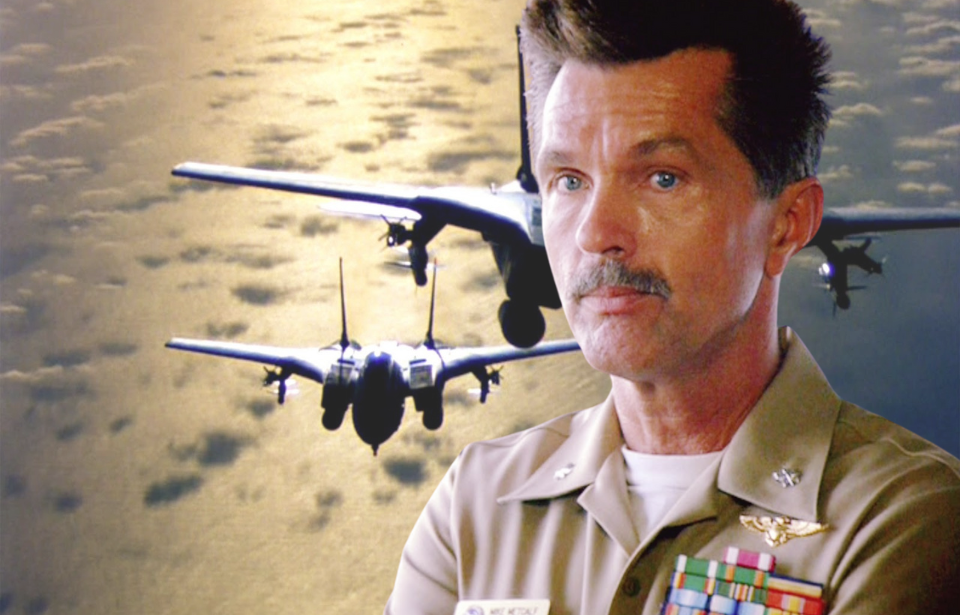Released in May 1986, Top Gun quickly became a cultural phenomenon, captivating viewers with its thrilling dogfights and intense look at life in naval aviation. The film’s popularity sparked such enthusiasm that U.S. Navy recruiters capitalized on the excitement, setting up booths outside theaters to connect with potential new recruits.
A major factor in the film’s success was its commitment to realism. Rear Adm. Pete “Viper” Pettigrew, a Vietnam War veteran and seasoned Navy pilot, served as the technical advisor. He collaborated closely with the actors and crew, ensuring that dialogue, flight maneuvers, and combat sequences reflected the true experiences of naval aviators. Pettigrew’s guidance added authenticity to the film, helping it resonate with audiences and cementing its lasting impact on pop culture.
Pete Pettigrew’s military career

Before serving as a technical advisor on the original Top Gun film, Pete Pettigrew had an outstanding military career. He began his service in the U.S. Naval Reserve and earned his wings as a naval aviator in 1966. After completing Fleet Replacement Training with Fighter Squadron 121 (VF-121), he was assigned to Fighter Squadron 151 (VF-151), where he flew McDonnell Douglas F-4 Phantom IIs during two intense 10-month combat tours in Vietnam aboard the USS Coral Sea (CV-43). During these deployments, he participated in missions that included engagements with Russian-built MiGs.
One of the major campaigns during this period was Operation Rolling Thunder (1965–1968), a prolonged bombing effort by the U.S. Navy and Air Force against North Vietnam. Widely viewed as ineffective due to political constraints and strategic limitations, the operation exposed significant gaps in pilot training and air combat effectiveness.
In response, the U.S. Navy reevaluated its approach to aerial warfare. This led to the creation of the Navy Fighter Weapons School—better known as TOPGUN. The program focused on teaching advanced dogfighting tactics and aerial maneuvering, drastically improving Navy aviators’ performance in combat. Pettigrew would later play a direct role in this effort and bring that same level of authenticity and expertise to Top Gun, helping ensure the film accurately reflected the skill and intensity of real-life air combat.
The US Navy’s TOPGUN school

After his deployments to Vietnam, Pete Pettigrew returned to San Diego. As a top Navy fighter pilot, he became an instructor at the Navy Fighter Weapons School, where he trained pilots in both air-to-air and air-to-ground combat from 1969 to 1972.
A sign at Naval Air Station (NAS) Miramar, where the training took place, described the program: “The four-week course started with a team of instructors covering U.S. and Soviet aircraft types, weapons systems, and fighter training tactics in a 50-foot-long metal trailer at [Naval Air Station] Miramar.”
Pete Pettigrew’s service, Post-TOPGUN school

In 1972, Pettigrew returned to Vietnam, serving aboard the USS Kitty Hawk (CV-63) with Carrier Air Wing II. That May, he and his wingman encountered four North Vietnamese MiG-21s. Against overwhelming odds, both pilots successfully downed one enemy aircraft each, making Pettigrew the only former TOPGUN instructor to score a confirmed kill in Vietnam. Numerous former students also achieved combat success, further validating the effectiveness of the rigorous TOPGUN curriculum.
A career in film soon came calling

From 1983 to 1986, Pettigrew worked with Paramount and even made a cameo in the movie. He appears in a scene as the date of Kelly McGillis‘ character, Charlotte “Charlie” Blackwood, while Tom Cruise‘s Lt. Pete “Maverick” Mitchell tries to impress her.
Tom Skerritt’s character, “Viper,” was also inspired by a real-life pilot, with parts of his role based on Pettigrew himself.
Pete Pettigrew’s legacy

When Pete Pettigrew ended his Navy career in 1998, he’d participated in over 375 combat missions in Southeast Asia, culminating in over 3,400 hours flying fighter aircraft. For his service, he was awarded a number of decorations: the Joint Superior Service Medal, two Navy Commendation Medals, 30 Air Medals, the Silver Star, the Distinguished Flying Cross, the Legion of Merit with Gold Star, two Meritorious Service Medals and the Defense Meritorious Service Medal.
More from us: The Five Greatest Fighter Aircraft Ever Flown By the US Military
The retired naval aviator soon threw himself into triathlons and was a master swimmer. In 2014, he and a team of other men set the record for the fastest swim over the Catalina Channel for those over 70 years old. During a speech to students at Menlo College the following year, he advised:
“The doors are open in your life. Don’t be afraid to go through them. No decision is still a decision, so don’t be afraid you will fail. The more you succeed, the easier it will be to walk through a doorstep. Watch for the doors.”
Rear Adm. Pete Pettigrew passed away on June 23rd, 2024.
